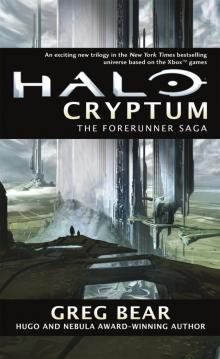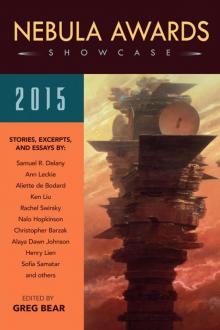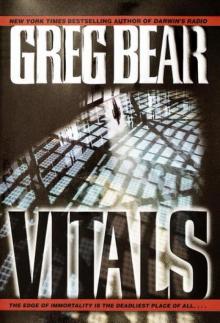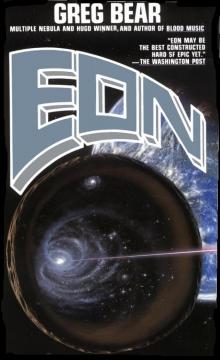Ares Rising 1: War Dogs Read online
Page 10
“Na time. T’ey’re close.”
“We’re fighters,” I say. “We should check and if necessary post watches at all the gates—”
“Voor buggies haul twenT’each. T’at wor sixty. You?—” She holds up one spread hand and three fingers. A stern look.
“Okay. But they’re just settlers. What kind of weapons would they carry?”
Her withering glance away tells me I’ve asked exactly the wrong question. “T’ey find lost guns on te dust—maybe yours?”
“Nothing they’re trained for. Nothing they have codes or charges for. They’re not Skyrines.”
Teal has this expression, avoiding looking at me, like she wants to tell all—but it’s hard. Long years of indoctrination and resentment. No love for the Earth that cut them off and joined an interplanetary war. Then, her stiffness slides away. She’s come this far. There’s no turning back. She focuses, makes a face—she has to speak to me in a way I’ll understand, and so she reaches back, speaks more slowly. “T’ey’re Voors. Dutch, Germans, Africans, some Americans—whites only. Independent, old history. Smart, cruel—fat’er-rule. They came first a join Green Camp, t’en cause trouble, break wit’ all, took a trek—t’eir trek—fifteen hundred kilometers. Claimed and routed a French camp—Algerians, Moroccans, some Europeans—cleaned t’em out, sent most a die on te dust. Rebuilt. Regimented. T’ey used French printers a make weapons, said a fight off solders from Eart’ coming a destroy t’em. Na a body at Green Camp or Robinson or Amazonia or McClain said naught a t’em. We’d all been cut from Eart’ already, na more supplies, na more uplink—pushed on our own, we couldna afford te bigger fight.” She takes a deep breath, shakes her head.
“Who found the Drifter first?”
“French camp. T’ey did sommat little mining, t’en pulled out. After, te Voors worked a hard five years until t’ey breached te lava dike and hobo surged. T’ey’re the fourth and fift’ teams. T’en… t’ey withdrew, but keep claim.”
“What did they leave behind?”
“Buggies back at te north gate, clot’ing—some supplies. I doan know how else much.”
“Your father was a Voor?”
“French. Voors let him live a-cor he war white. But t’ey sent his first wife out te dust. She wor African, a Muslim. Fat’er left Algerian camp just after Voors close te Drifter. Went te Green Camp…” She gets that distant look, too much history, too many nasty tales even before she was born. “Married my mot’er, and t’ere wor me.”
The Drifter was closed due to the hobo for more than twenty years? Nine or ten Martian years? And we happen back just in time for the reopening! This isn’t making even a skeletal sort of sense.
“The Voors, do they partner with Antags?” I ask.
She makes a face, I would think that—then shakes her head vigorously. “We call t’ose Far Ot’ers. We wor told Amazonia sent folks out te dust a meet t’em. Nobody’s heard a t’ose since.”
“If the Voors left good stuff here, what could we expect to find? Mining machinery? Food?”
“Fat’er say t’ere wor a printer-depositor, barrels of slurry, maybe safed food, surely spare parts, enow te gear up quick—all in upper chambers so na get swashed. T’ey keep all locked, wrapped, and sealed—stake and reclaim onced hobo sinks. But…” She reaches into her pocket and takes out another platinum coin. Shows me a string of numbers and letters inscribed on both sides. Similar to the coin I found. Different numbers, however. “Codes te get in.”
“That’s how you got us in?”
She nods.
“And the power?”
“Hydro deep, far below. Where te hobo still flows.” Saying all this, Teal looks sick with doubt and uncertainty. She has no idea what we’re capable of.
“Where do we look for their cache?” I ask.
She walks off a few steps. “Fat’er show a chart, but t’wor old.”
We work our way around the chamber, searching the deep shadows for exits, side tunnels—and find a dark hole hiding behind a basalt outcrop. No star lights, but wide enough to allow a buggy. The big tunnel cuts through metal and black rock. No grooves. Why?
“T’is was made near te end, I t’ink,” Teal says. “Afore t’ey left.”
If the Voors are indeed hard-core bigots, renegades, killers—patriots intent on making their own nation because they fit nowhere else… Are they also the most rational of pioneers? Would they attract and keep the best engineers, enough to plan and carry out a long-term drainage operation? Or did they just keep blasting pits and tunnels way down below until they tapped into the hobo? Ruining or drastically delaying their schemes of conquest, forcing them to abandon the Drifter…
Waiting, fuming—angrier and angrier.
“Your father was their chief mining engineer?”
“Geologist,” Teal says.
“Did he go to Green Camp to offer them his expertise? After the Voors…”
“He told enow a keep t’em interested, so t’ey’d allow him a stay. But he never told all. He kept saying te hobo would be down soon, because wit’na the Drifter and its promise, we have na value. Ally Pecqua and Idol Gargarel finally got tired, arrested him. T’en t’ey stole my widow’s due, and he knew ’twas over for bot’ us. When he wouldna tell more, t’ey sent him out te dust. I wor next. Sa I left.”
“Was it always that bad?” I ask.
“Rationals love a correct and trouble. Cut off from Eart’, t’ey only got harder and meaner.”
Makes my neck hairs bristle. Still, though we owe Teal our lives, I have no way to verify her story, no way to know how a meeting with the Voors might turn out. Maybe they’re just tough. Maybe they’re fighters. Maybe we are better off with bigoted fighters than corrupt Muskies. I’ve certainly known enough bigoted good ol’ boy Skyrines. Nasty boys in town, terrific in a fight.
SNKRAZ.
At the end of this wide tunnel lies a wider, square chamber, and within the chamber, a great big knobby shadow surrounded by even darker boxes and drums. The walls are equipped with shelves—some cut out of the rock. Right and left are smaller antechambers. Teal pokes in and out of them in sequence, silent.
Then she emerges from the last.
“Is that a printer?” I ask.
She nods. “Never seen one t’at old. ’Tis big.”
“And the drums… slurry?”
“Plastic, metal, alumiclay, a t’ere—” She points. “Sinter chamber. Make almost any machine part. May gin up te buggy, te other buggies. If I can switch and ramp power.”
“Where would we do that?” I’m acutely aware our time is running out. The Voor buggies were less than ten klicks away when last we looked.
“Track a star lights,” she says. “T’ey’ll get brighter. Te generator and t’ermal source should be near te emergency reserves.”
“Your father said that?”
Another nod.
We walk together back up the slot, find a dark offshoot we missed, venture along for a dozen meters.
“T’ere’s a big battle out t’ere,” Teal says. “You, te Far Ot’ers.”
“Yes, ma’am.” I walk a couple of steps behind her. She’s liable to fling her arms back as she feels around in the dark, and she’s strong. Don’t need to lose teeth.
“You have any idea what Eart’ did, cutting us off, cutting us loose? How many you have killed a loneliness and Eart’-grief?”
“I’m not sure I understand.”
“We’re morna half crazed. Cost me my first husband. He had Eart’ family too.”
“Oh?”
Her accent gets deeper. She’s going home in memory. “He worna used a narrow places. Came star-eyed, filled a freedom-talk. Romanced my family and won me young, t’en spent most a his time far-minding it, away in his t’oughts—back a Eart’. Cut off, he lapsed, sorrowed, didna see us, didna see me. Vasted up here.” She pronounces this “vaysted,” a portmanteau word, a cruel bundle of her first husband’s life. “Gone stir,” she adds softly. “After t’at
, never saw me clear. Saw only his Eart’ wife. Tore t’ings, violent, til te camp passed judgment and sent him out te dust. He just wanted a go home.”
Not just the Voors are hard, apparently.
I’m not about to point out what we were told, about Muskies not paying their cable bills. Not paying taxes. Or any of the rest of it. Our lives may depend on this young woman’s tolerance, if not her favor.
Quiet minutes as we push along, until we see a single star light hanging on its almost invisible wire—but brighter than the others. Another fifty meters, in darkness and complete silence except for our breath and padding boots, and here the star lights are brightest of all—five bunched together, as if marking a location. Should have brought Tak, I think, with his new eyes. But mine have caught a black hatchway she missed.
“Here,” I say to Teal, who has gone on, perhaps distracted by her memories.
Doubling back, standing beside me, she pulls out her platinum, feels around the hatch—finds a small panel, slides it open, revealing a display and keypad. She lays the coin against the panel and punches in the string of numbers. The hatch clicks and together we pull it wide. Beyond brightly glow a lot more star lights, hundreds suspended from the ceiling, outlining the walls of another larger chamber, also square and about twenty meters on a side. The illumination is bright enough to dazzle for a few seconds, but we can clearly make out a medium-sized electrical panel, and beside this, the steel cap to a thermal source. Hot water from below ground? Nuclear? Likely not spent matter. That’s never been shared off Earth. Just as well…
Teal seems to be following memorized instructions. In a few minutes, moving from station to station, she’s got the station humming, buzzing, snapping inside its ranks of transformers, storage cells, fuel cells. The star lights brighten and the room lightens to clarity surrounded by stony gloom, except where a vein of that crystal-patterned nickel-iron reflects cloudy brilliance.
“Hydro still strong inna deep works,” she says.
“Can we lock the southern gate?” I ask.
“Maybe,” Teal says.
“Do you know how?” I ask.
“Control room,” she says.
“This isn’t it?”
“SubstaTon for te nort’ern upper works. T’ere should be a substaTon for sout’ and east, also big deeps and central digs—a main board for te whole installaTon.”
In the new brightness, I see that Teal’s face is still slick with tears. This was her father’s domain. He worked here… For the Voors. Told her what he knew.
But all that he knew?
“You know where that is?”
Her large gray-green eyes flick, searching, looking beyond me. “Maybe,” she says, and returns to the wide tunnel. At the junction, she points left. “T’is way.”
She moves ahead. My squad’s survival likely depends on what we find. I’m already remiss in not telling them what I know about the Voors. I judge we have about ten minutes to prepare for the new buggies’ arrival. If this chancy operation succeeds, and nobody gets in our way, we might be able to rejoin the battle—the war. To live is to fight.
But I’m thinking on this woman, no doubt about it. Some points down the trail I’m going to find out all I can about the Muskies, about Teal’s people at Green Camp, if she still thinks they’re her people—whatever they call themselves. Little Green Men and Women. Maybe they’re all just Martians now. Very romantic, that. More history. More culture and language.
More about what made her what she is.
The brighter lights reveal all we missed before: a sunken door, a fallen sign, a set of steps carved into the rock, leading up about fifteen meters through a smooth-cut corridor to another chamber. This one is lined and sealed by black, shrink-down plastic sheeting. Teal sets to removing the plastic, not an easy task, and I help. In a few minutes, we unveil a much wider shuttered viewport facing southeast—and beneath that, a dusty and decades-old control panel, sporting a holographic display panel—tiny projectors mounted on a strip above the panel—
The works. A southern watchtower to complement the northern—but also a command center.
I stand behind her as she takes a seat on a hard plastic chair. Most of the equipment here was likely made by the old, bulky printer-depositor; that is how Mars was furnished, replacing old-style manufacture and factories—but demanding slurries to feed the printers: solvents, polymers, powdered metals and ceramics… All the necessary materials that could be shot through a printer head onto a laser-hardened or heat-set or fusible object of manufacture. Including weapons.
All of which had to be shipped from Earth, or mined and purified on Mars.
Seven minutes. I’m trying to imagine the motions of the Voor buggies, the men inside—or men and women. How long will it take to get back to my squad? What can I deliver in the way of knowledge, strength, advantage, if I leave this command center before it’s even up and running?
Teal looks at me, takes a deep breath, then flips open the cover to a number pad. Carefully, she lays the coin on the pad, then keys in the string.
We both jump as the panel powers up. Lights pick out projectors, which begin to whir and whine after so many decades of disuse. The panel sensors recognize our faces, find our eyes, the projectors align, and color patterns and even crude, unfocused images flicker before us. The first views are external and seem to fill the volume over the panel in exaggerated 3-D.
Teal waves her hand over a flat square in the center of the panel and brings one image forward, spreading it wide with her fingers. We now have a live view—I assume—of much of the southeastern slope of the Drifter, the rear shoulders and back of the swimming giant. She calls up other cameras, all external, and then, with a side glance, the first internals—thumbnails of dozens of chambers within the Drifter’s bulk. At Teal’s command, the thumbnails expand into brighter, more detailed images, rising between us and the dark walls. One shows a sloping surface made of crystals, surrounded by darkness but outlined by star lights. That view suddenly goes black: camera failure, security—or did Teal just delete it with a flick of her finger?
What she’s summoned from this watchtower control panel is a tally of tunnels, shafts, digs, forming a map that turns slowly before us, expanding in jerks as more are added, as more old cameras return to life. The Drifter was a big operation, and it appears the flooding has not permanently damaged most of it.
Coins, codes, cameras everywhere… Multiple points of security. The miners had seriously worried about claim-jumpers, interlopers—maybe Skyrines or Antags, though it seems this place was left to the hobo before our war began.
Soon, the grand map finishes filling out. I recognize the upper works—the gates and tunnels we’ve passed through, along with where we are. There are many, many more tunnels and chambers, not yet explored, all in green. But there are also extensive and deeper excavations, some very deep, judging by the comparatively small profile of the upper works—and many of these are marked in blue and red.
Teal pokes her fingers through the blue and red traces. “My God,” she breathes. “T’ere’s na’one here, and ’tis still changing!” She shoots me another look, sees I have no idea what she’s on about, then blanks the map and expands the southern garage and its “harbor,” another encircling wall of lava.
The three Voor buggies are pulling up outside a wider, taller version of the northern gate through which Teal brought us earlier. She flicks through several vantages around the rocky harbor and sandy floor. “A t’ird of te eyes are down,” she mutters. “Might come back onced t’ey warm. Can you see enow?”
The buggies have halted, having arranged themselves in a defensive triangle, tails together, noses pointed outward. Nobody disembarks immediately. No way to know how many Voors we might face, what arms they carry, if any…
Then a hatch opens in the middle buggy and a stocky figure in patchwork skintight emerges, hesitates on the step, reluctantly descends.
“Voor?” I ask Teal.
“Lo
oks like.”
“Recognize him?”
The projectors whine and complain as she turns to frown at me. “I doan know any Voors.”
“Is he a leader, a scout?”
She shakes her head.
Another figure climbs down, in similar skintight—taller than the first by a foot, broad across the shoulders, brawny. Not at all like Teal, but still homegrown, I guess, since there hasn’t been a colonist transport for years…
And then a third, much smaller—skinny, even puny, and a fourth, about mid-sized. All look male to me. They stand out on the rock and sand before the southern gate, not moving after they’ve arranged themselves in a curve beside the middle buggy. I assume they’re all Voors. There’s a stiffness, a tension in their grouping—but nobody has emerged from the other buggies, not yet.
“Any comm?” I ask.
She shakes her head. “Not’ing like,” she says. “Doan know about radio.”
“They might not know we’re here.”
“T’ey know summat is here,” she says.
“How?”
Silence.
“Would Green Camp sic Voors after you?” I ask.
“T’ey might.”
“That bad?”
Another nod.
“To arrest you?”
“Common interest,” Teal says with a lost downbeat. “Two years back, Green Camp and the Voors drew up a share claim, for when te hobo draws out. My fat’er helped make te deal, to stay important and keep us alive. Green Camp t’inks Voors might haply force t’at claim if others jump. T’ey might t’ink I’m jumping. If t’ey see you…”
Christ, I’m beginning to feel like I’ve stumbled into a Jack London novel. And fuck you if you think a Skyrine doesn’t read old books.
The Voors haven’t moved. By posture alone, they look apprehensive. Then they turn as the point buggy’s lock hatch opens. Three more Voors descend, another varied group—also male.
From the last buggy, three more step down—making nine. Still nowhere near capacity for the buggies.
But then three figures in different skintights emerge from the lock of the middle buggy. All Skyrines, and all female, prominently displaying their sidearms.

 Foundation and Chaos
Foundation and Chaos Halo: Silentium
Halo: Silentium Blood Music
Blood Music Halo: Cryptum
Halo: Cryptum Halo: Primordium
Halo: Primordium The Unfinished Land
The Unfinished Land Hardfought
Hardfought Hull Zero Three
Hull Zero Three Slant
Slant Multiverse: Exploring the Worlds of Poul Anderson
Multiverse: Exploring the Worlds of Poul Anderson Take Back the Sky
Take Back the Sky Nebula Awards Showcase 2015
Nebula Awards Showcase 2015 Machineries Of Joy
Machineries Of Joy A Martian Ricorso
A Martian Ricorso Eternity
Eternity Vitals
Vitals The Infinity Concerto
The Infinity Concerto Beyond the Farthest Suns
Beyond the Farthest Suns Moving Mars
Moving Mars Quantico
Quantico Darwin's Radio
Darwin's Radio Beyond Heaven's River
Beyond Heaven's River Star Wars - Rogue Planet
Star Wars - Rogue Planet Legacy (Eon, 1)
Legacy (Eon, 1) War Dogs: Ares Rising
War Dogs: Ares Rising Sisters
Sisters Dead Lines
Dead Lines Just Over the Horizon (The Complete Short Fiction of Greg Bear Book 1)
Just Over the Horizon (The Complete Short Fiction of Greg Bear Book 1) Eon (Eon, 2)
Eon (Eon, 2) Venging
Venging Eon
Eon City at the End of Time
City at the End of Time Psychlone
Psychlone Dead Lines, A Novel of Life... After Death
Dead Lines, A Novel of Life... After Death Eternity (Eon, 3)
Eternity (Eon, 3) Cryptum
Cryptum Corona
Corona Sleepside: The Collected Fantasies
Sleepside: The Collected Fantasies Women in Deep Time
Women in Deep Time Queen of Angels
Queen of Angels Darwin's Children
Darwin's Children Dinosaur Summer
Dinosaur Summer The Forge of God tfog-1
The Forge of God tfog-1 Foundation and Chaos f-9
Foundation and Chaos f-9 Star Wars: Rogue Planet
Star Wars: Rogue Planet The Forge of God
The Forge of God Mariposa
Mariposa Halo: Cryptum: Book One of the Forerunner Saga
Halo: Cryptum: Book One of the Forerunner Saga Strength of Stones
Strength of Stones Anvil of Stars
Anvil of Stars B00AQUQDQO EBOK
B00AQUQDQO EBOK Anvil of Stars tfog-2
Anvil of Stars tfog-2 Ares Rising 1: War Dogs
Ares Rising 1: War Dogs Rogue Planet (star wars)
Rogue Planet (star wars) The Machineries of Joy
The Machineries of Joy Far Thoughts and Pale Gods
Far Thoughts and Pale Gods Songs of Earth and Power Omnibus
Songs of Earth and Power Omnibus Killing Titan
Killing Titan Darwin's Radio d-1
Darwin's Radio d-1 Darwin's Children d-2
Darwin's Children d-2